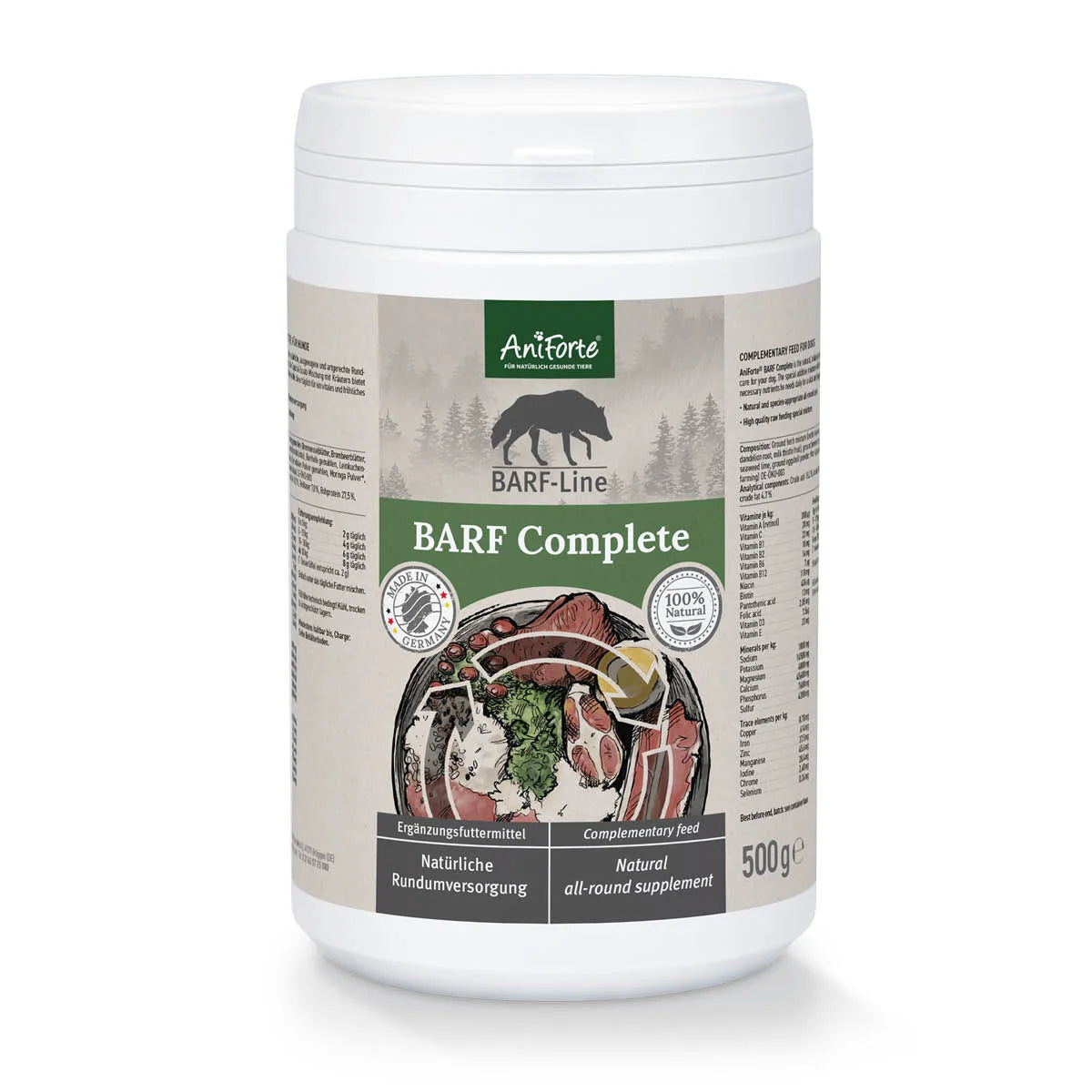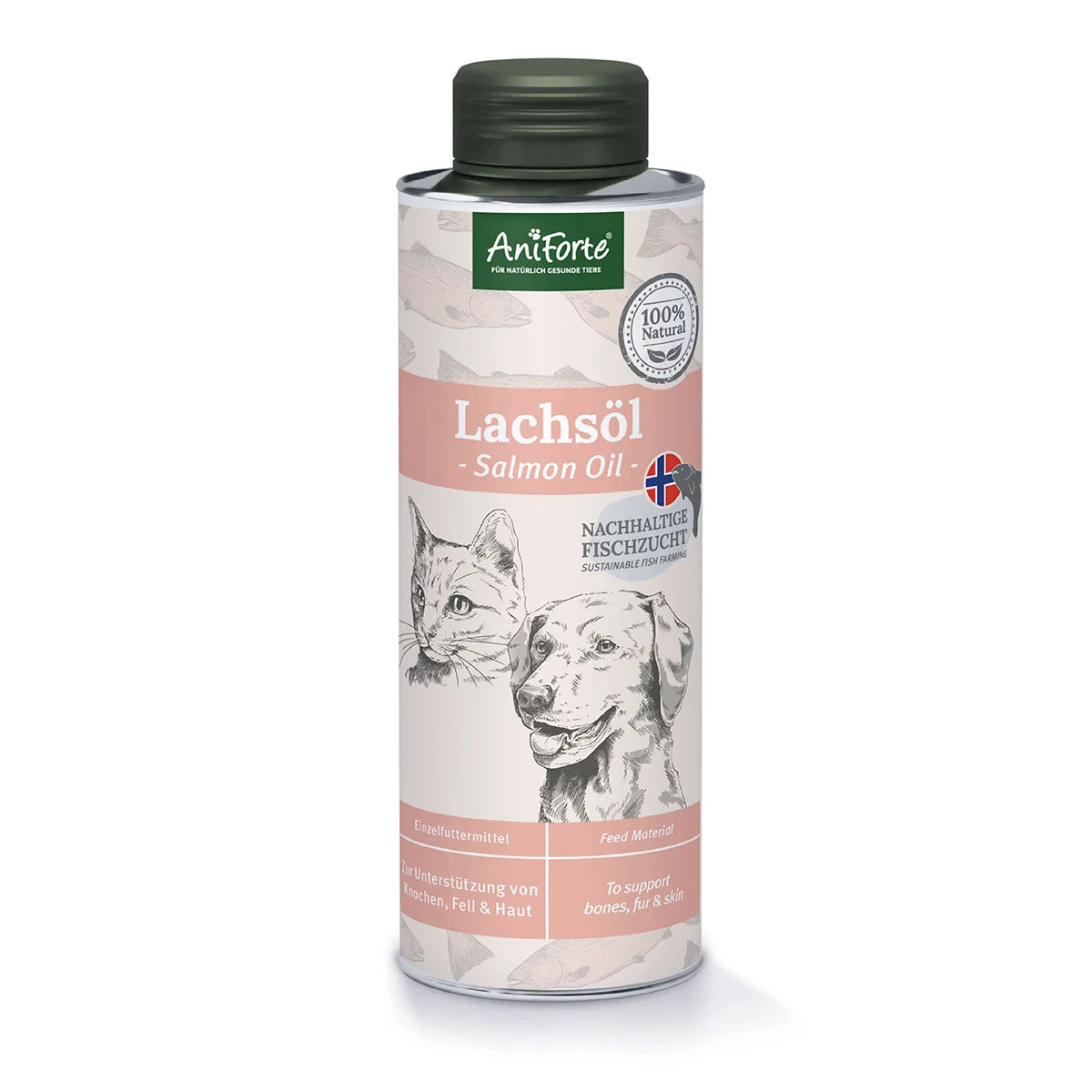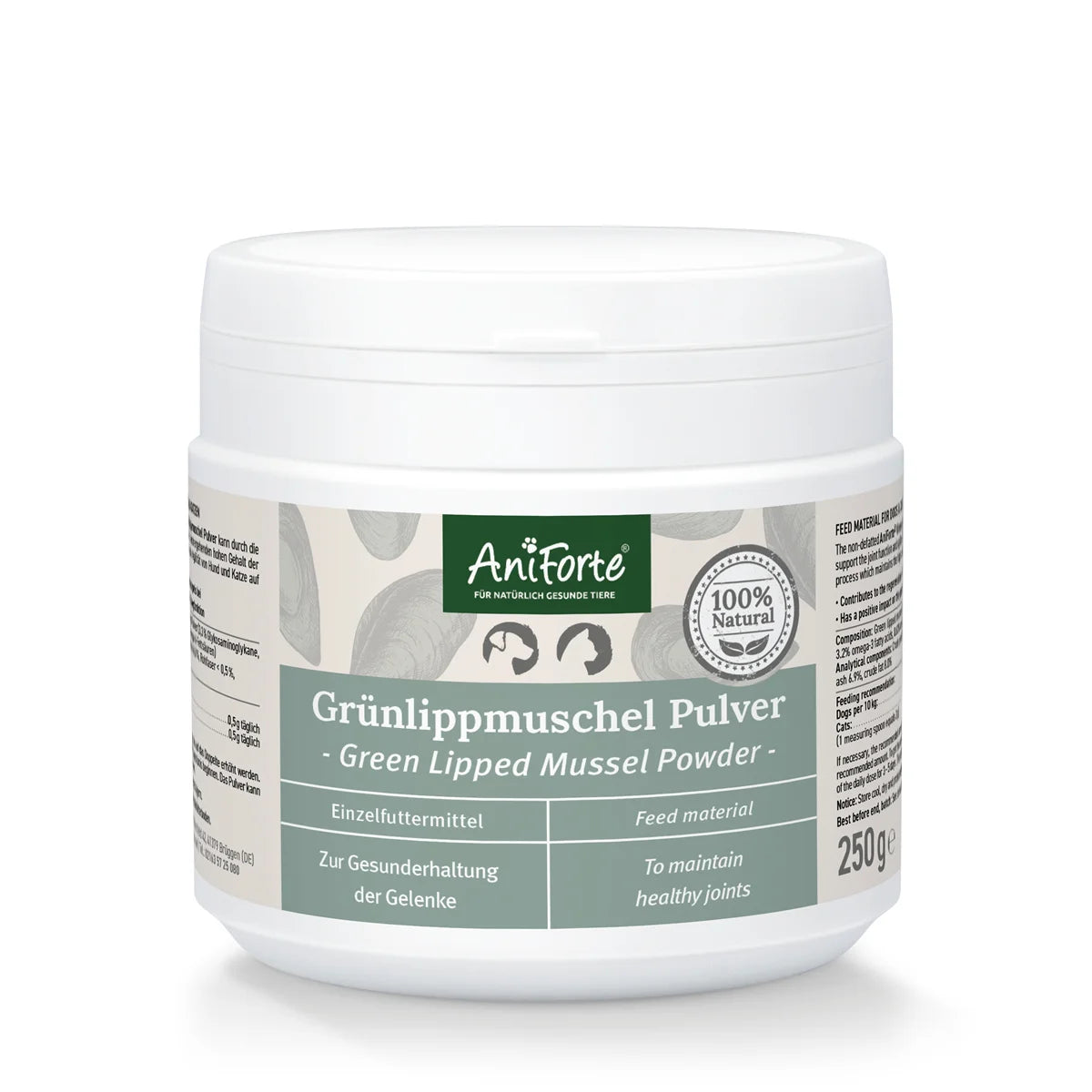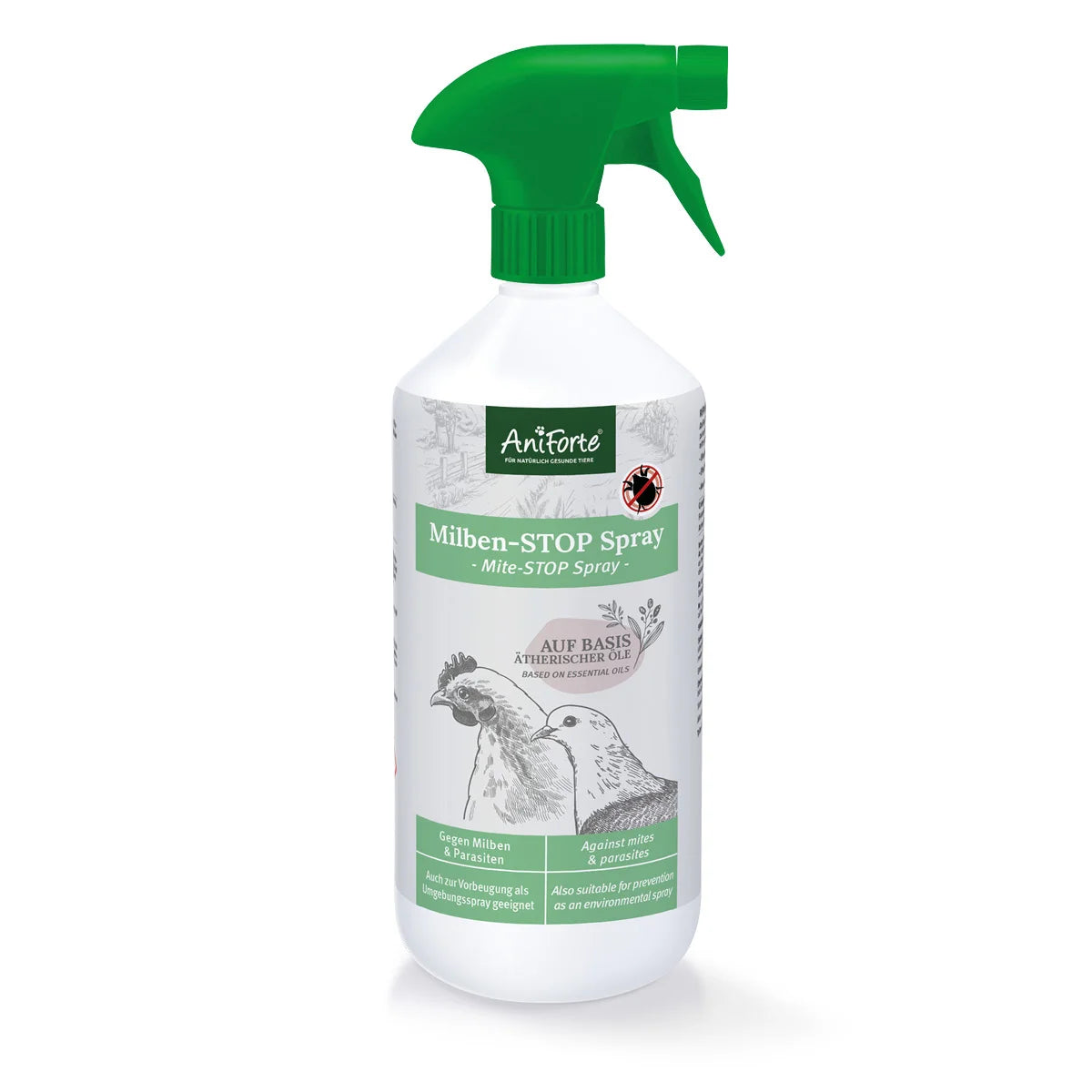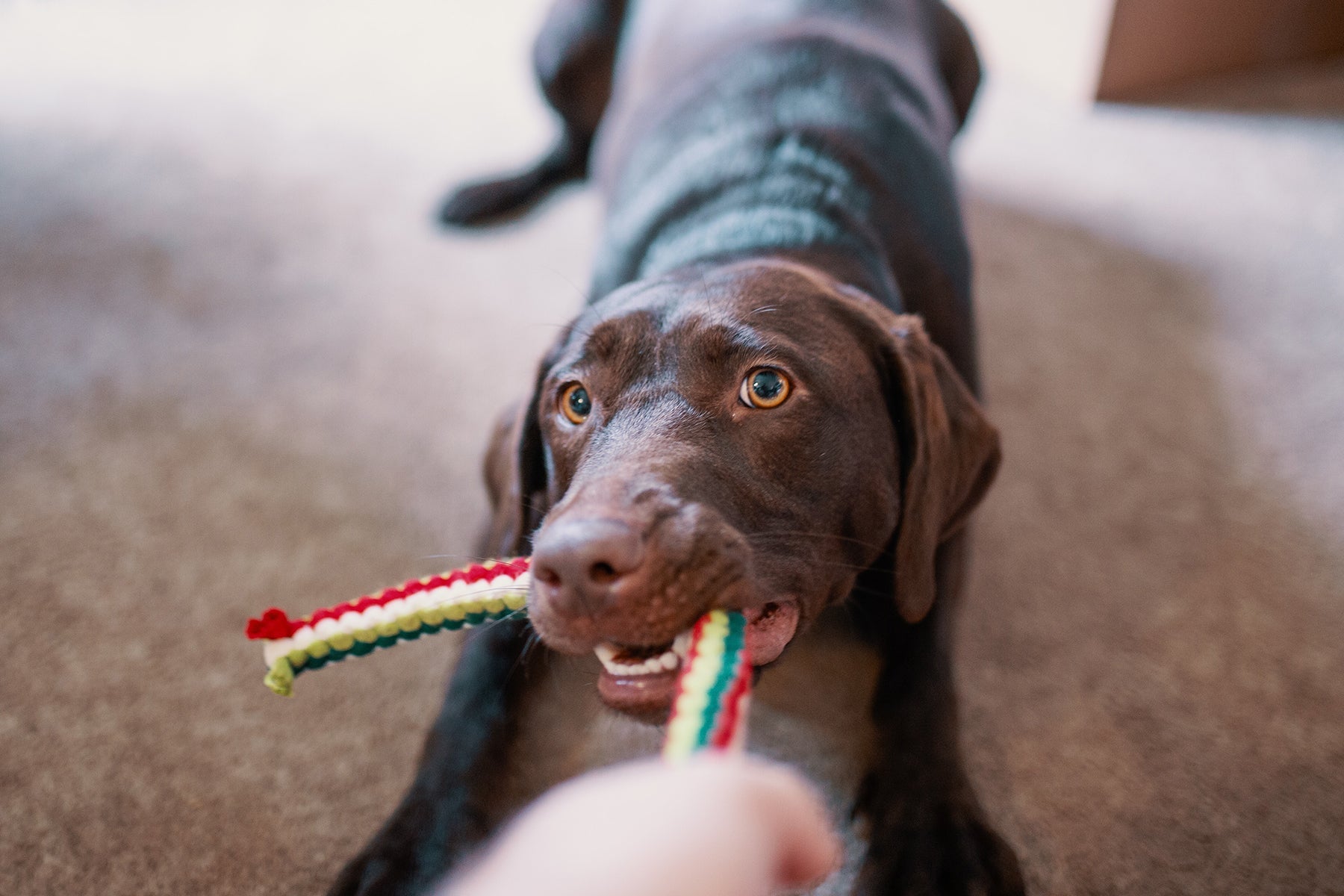
Dogs are curious by nature, they get bored quickly and need to be exhausted regularly, or they may show their disobedient and feisty side. Practicing tricks can banish boredom, promote obedience and strengthen your relationship.
If dog tricks are something completely new for you and your little friend, then it is best to start with the standard exercises such as "sit, lie down, get up". These commands not only serve as obedience training, but can protect your dog, for example when crossing roads. They are also the basis for learning other dog tricks and maybe even little artistic feats. If your four-legged friend has mastered the basic commands, try some more advanced tricks and add variety to your exercises. We have put together 5 dog tricks for you. Have fun practicing!
Trick 1: Crawl on All Fours
First, bring your four-legged friend into the "down" position. Crouch down and hold a treat in front of his nose. Place one hand on your dog's back and use the other to slowly guide the treat away from him across the floor. Once he stands up to follow the treat, gently push him back to the floor. With every correct crawling movement you say the appropriate command, such as "crawl" and reward your dog directly. If it goes well after a few times, take 1-2 steps to the side and give him the command from there. Practice this later without a treat.
Caution: Practice this trick on a surface where the dog cannot slip, preferably on a lawn or a carpet. And please note, this exercise is not suitable for dogs with hip and back problems.
Trick 2: Go Around in Circles
Squat in front of your dog, hold a treat in front of his nose and guide it in a circle away from you. Make sure that your four-legged friend sees your circular movement. If your dog follows the treat in a circle, then directly name the desired command, "turn" or "dance" and reward him. Practice this until the dog does the exercise on command. For advanced and healthy dogs: let your four-legged friend stand on two legs and lean against you. Hold the treat over his head and move it in a circle over him. But make sure that he follows with his snout. As soon as he has made the first turning movements on two legs, name the command and reward him with this treat.
Caution: as before, try this on a non-slip surface and do not practice with dogs that have hip problems or are old and weak.
Trick 3: Tasty Paws – a trick for self-control
Let your dog "make room:" place a treat on his paw and say the command to hold off. If he still snaps it, quickly slide a hand between the treat and the dog. Speed and attention on your part are required here. If your four-legged friend complies with your command to wait, give the treat with the desired command, e.g. “take.”
This trick works very well as a concentration and obedience exercise.
Trick 4: Look Away
This exercise takes a lot of effort for your dog and demands patience and attention of you.
Let your dog sit, bring yourself to eye level with him as best as possible. It is best to hold the treat between your thumb and forefinger in front of your four-legged friend so that he can smell and see it. And now you wait until he turns his head away from the treat. This can take some time. As soon as he turns his head away from the treat, name the command and reward him with that treat. You practice this until he reacts immediately as soon as you take the same position and hold the treat in front of his nose.
If your dog wants to grab it in between, take it out of his field of vision, he'll quickly learn that he won't get it that way.
Trick 5: Reverse Parking
As a prerequisite, your dog should already know the command "stand." To make it easier for your four-legged friend, let him stand between you and a boundary, a fence for example. Take out a treat and hold it over your dog's head so he can see it. Then slowly move the treat backwards. If your dog makes even the slightest backward movement, speak the command "back" and reward him. Once the dog masters this exercise well, you can practice it without the aid of the boundary.
Happy practicing!

